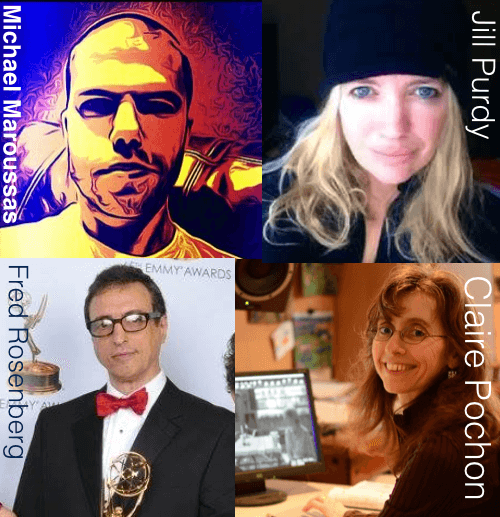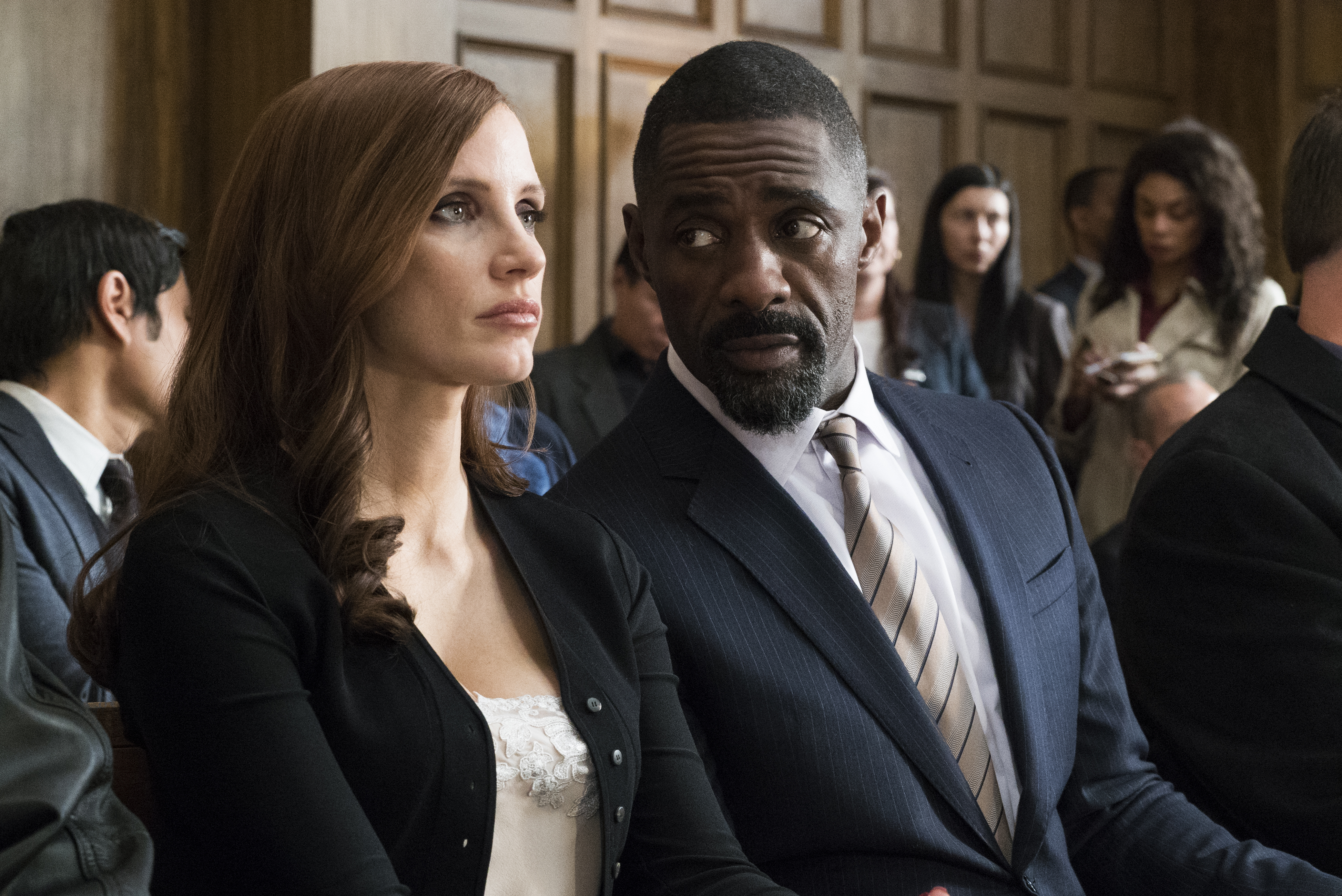In this episode we gather some of the busiest and best dialog editors working in film and TV today. We talk to Jill Purdy, Claire Pochon, Fred Rosenberg and Michael Maroussas about their workflows, triumphs, pet peeves and lots more. Collectively these are the architects behind the dialog tracks on some of the greatest movies of the last 30+ years. See bios below:

Fred Rosenberg has a long and impressive list of films on his credit list that is loaded with some of the most iconic films of American cinema. Based in New York City, Fred has worked with some of the worlds most renowned directors like Martin Scorsese (Goodfelles, Gangs of New York, Casino), The Cohen Brothers (Fargo, Oh Brother Where Art Thou), Spike Lee (Inside Man, Crooklyn) Steven Soderbergh (Logan Lucky), Michel Gondry (Eternal Sunshine of the Spotless Mind), and Jonathan Demme on Silence of the Lambs. All this in addition to prestige TV projects like Boardwalk Empire, Damages, Vinyl, and Netflix’s recent She’s Gotta Have it. Fred on IMDB
Jill Purdy has been a busy sound editor for more then 2 decades and currently is affiliated with SoundDogs Toronto. She has been the dialog editor or supervising sound editor on many of our favourite projects including the recent Guillermo del Toro film “The Shape of Water”, Aaron Sorkin’s “Molly’s Game” and “Snow White and the Huntsman”. In addition many other films and TV series, Jill has also had long collaboration with director Darren Aronofsky as Dialog editor on his films “Requiem for a Dream”, “Black Swan”, and “Noah” additionally Jill was Co-Supervising Sound Editor on Aronofsky’s recent “Mother!” Jill on IMDB
Claire Pochon is based out of Montreal and is an in demand diaog editor for both English and French projects. She has worked on Hollywood projects like Denis Villeneuve’s Arrival, and Jean-Marc Vallée’s Dallas Buyers Club and his upcoming prestige HBO series Sharp Objects. Claire has also cut dialog on french blockbusters like Bon Cop Bad Cop 2, and foreign language Oscar nominated films Barbarian Invasions and War Witch. Claire on IMDB
Michael Maroussas is a top dialog editor working out of London England. He has many credits on large action films like X-Men:First Class, Kickass 2 and Kingsmen: The Secret Service and the sequel Kingsmen: The Golden Circle. He has also worked on lots of dialog heavy dramas like the recent best picture nominated Darkest Hour as well as About Time, Jane Eyre, and The Hippopotamus. This year he was nominated at the MPSE Golden Reel Awards for Outstanding Acheivement in Dialog Editing in both the Tv Series AND Film categories for his dialog work on the series Black Mirror and the film Darkest Hour. Michael on IMDB
_________________________________________________________________
Also we want to send out a BIG Thanks to Tiki Horea for editing this episode of the podcast. This one was a beast and Tiki made it sing. You can find him in the following places:

Amazing! Thank you for this! Fantastic episode (075)! I really needed this one today. I have followed the podcast and site for a long time, great work, thank you for all that you do!
Hey Jamie – Glad you liked this episode, it was a fun one to put together. Thanks for listening!
Thanks! Great stuff–thanks to the editors for taking the time!
Nice podcast. Jill mentioned something about “mod cut” tracks. What does she mean?
Cut the production dialogue from the first modulation of the dialogue to the last modulation of a word or phrase. Having no other sound than the human voice, eliminating all background noise. Its the original method of de-noising in early film mixing
Methinks Thou should re-listen to Clockwork Orange and Dr. Strangelove for examples of delicious Production Sound ambiences that didn’t get murdered by overzealous DE’s. Coen brothers too. Shall I go on?
I am sure these are fantastic examples. Thanks for sharing! Have you found the ambiences you record for WestWorld make it through to the mix intact?
Hi Nick – think she means lines of dialogue cut tight and then played against a bg atmos ‘bed’ so – hopefully – the dial doesn’t sound as tightly cut as it looks. Correct me if I’m wrong though Jill!
Thanks for this, a rare deep-dive into dialogue editing, yay! All the panelists had really valuable insights and interesting perspectives to share. I enjoyed hearing details about how they work and also about the more general issues they encounter, as well. Thanks for bringing attention to this topic. Liked and shared. Cheers!
Great Podcast, about a really underrepresented topic! Very informative! What would a production sound mixer have said to this discussion? 🙂
Hey Tobi – Thanks for listening to the podcast. We were thinking the same thing and we are going to try to figure out a way to have a conversation between dialog editors and production sound mixers in a future episode.
Yes, please!!! As a production sound mixer myself many things don’t happen because we like them but because we try our best to get an acceptable level of dialog againt all odds. Would I like to have an awesome boom on everything and just one or two tracks playing? Sure thing! Is this the reality on the 2-camera-TV-Shows I am doing? No.
Keep fighting the good fight Philipp! We know location guys are dealing with impossible conditions and I am always amazed how many great recording you come away with!
So good! Thank you so much for sharing all of this knowledge!!
Thanks for listening Gaston! It was really amazing to be able to get all of these pros together.
Thanks for this! I have a question though, what do they mean by “mod cut”?
Mod cut means you edit the sound right at the very first modulation in the wave form. Leaving no ramp for AMB at beginning or end.
Great conversation..Thank you! I thought the comments about plant mics was surprising As a Production Mixer, I will use plant mics sparingly. Understanding that most likely an entire scene is not meant to be played on a plant mic. Sometimes, a plant will be good for single word or part of a line. As mixers, we will use that plant in our mono mixes and mix them to sound natural.. And if they do work in a particular scene or take- make huge notes in the reports. Paper notes had room for more description… But honestly, it can be dicey to rely on them, but when they work- they can be great- many times better than a wire… And plants in cars- that is always my first approach- and i do not think i am alone in that strategy. We as production mixers spend thousands of dollars trying to get exactly that magic plant mic combo that works in cars. … Thank you dialogue editors! I know you have salvaged some tracks that we that thought were the worst. And did so without glory and accolades.
Thanks for listening to the episode John! Great to hear it got you thinking! I have had some great luck mixing plant mics in the past but they can be dicey sometimes. Check out our episode about the dial on Marvelous Mrs Maisel that came out recently for more conversation on dial going from set to edit suite to mix theatre.
Listened to all the production sound related podcasts. The dialogue editing episodes are really gold. Great insight and it is good to hear to the differences in perspectives. But still pretty good gaps in the relationship between production sound and post. It may always be that way– just because of production and post production scheduling..
In this podcast, the editors mentioned spending time time aligning of production tracks and longing for the days when this was not an issue. Is it known widely that when we all switched to digital wireless, that every mic now had a minor delay factor? 2ms-6 ms.. Not all manufacturers the same… But it is a constant and there are only a few manufacturers.. So of course there is some phasing just from the natural elements – distance from source etc.. But add in the digital delay… Did this add the time required to clean things up by the dialogue editors? Another good reason to get a clean (no bg) slate clap.. ? so all mics can hear it.. ? Spitballing..